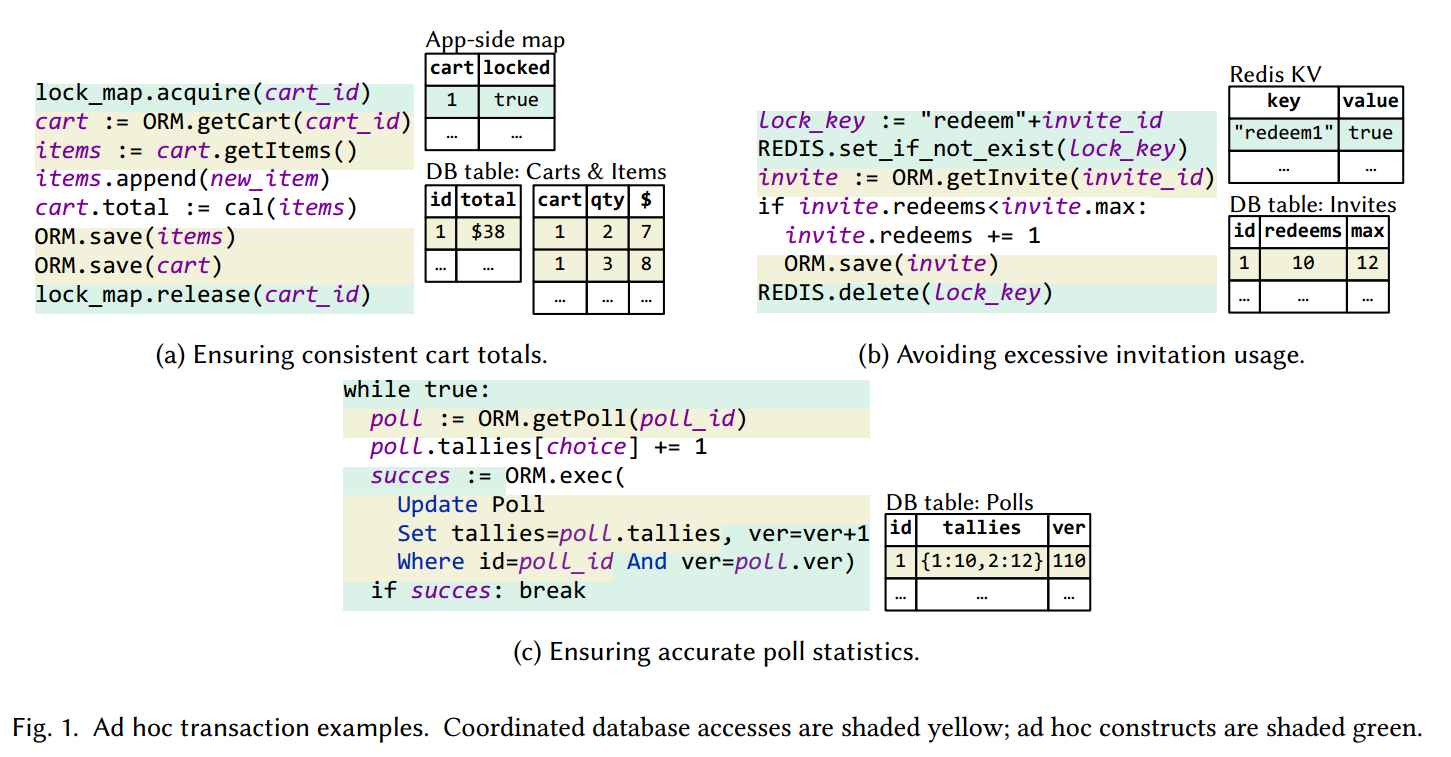| 【2022Fall】在人机交互领域,计算机可能指的是 |
A. 台式机
B. 大型计算机系统
C. 网站
D. 以上都是 |
D |
| 【2021Fall】以下描述正确的是: |
A. 人机交互只关注软件的可用性
B. 人机交互就是用户界面设计
C. “以用户为中心”是交互设计的主要方法
D. 人机交互只需要关注软件设计,不需要关注用户 |
C |
| 【2020Fall】以下哪个领域不会对人机交互学科产生影响 |
A. 人机工程学
B. 认知心理学
C. 计算机科学
D. 上述学科均对人机交互学科有影响 |
D |
| 【2022Fall】人机交互是交叉学科,作为交叉学科团队的主要缺点是 |
A. 会产生过多想法
B. 看待和谈论问题的角度不同
C. 相互沟通不容易
D. 以上都不是 |
C |
| 【2022Fall】【2020Fall】在 EEC 模型,用户为达目标而制定的动作与系统允许的动作之间的差别被称作 |
A. 执行阶段
B. 评估阶段
C. 执行隔阂
D. 评估隔阂 |
C |
| 关于交互设计原则,以下描述正确的是: |
A. 设计原则不能指导设计人员做出正确的决策
B. 交互设计大师 Donald Norman 提出了十条启发式设计原则
C. 在要求输入日期时为用户提供日历组件,这对应“用户应享有控制权和自主权”的设计原则
D. 设计应该使用用户容易理解的语言来表示错误信息 |
D |
| 【2022Fall】以下哪一种情况不会在优秀产品中出现 |
A. 使用一长串命令来完成一个特定功能
B. 图标们拥有清晰的语义
C. 使用常用的快捷键,如用 CTRL+Z 表示撤销
D. 使用声音表达特定的含义 |
A |
【2021Fall】以下两个网页的主要区别在于: |
A. 背景颜色
B. 第一个网站提供了对结果数量的控制
C. 第二个网站只包含必要的 UI 组件
D. 第二个网站的配色方案更优 |
C |
| 提供加速器(如键盘快捷键等)的目的是为了提高系统的: |
A. 实用性
B. 效率
C. 态度或喜爱程度
D. 易学性 |
B |
| 【2022Fall】能够帮助设计人员了解用户特定交互行为发生的原因的可用性工程方法是 |
A. 边说边做
B. 用户和任务观察
C. 场景
D. 启发式评估 |
A |
| 【2020Fall】以下哪一条符合频繁使用的专家用户进行设计的指导原则 |
A. 提供指令、对话框和在线帮助
B. 减轻记忆负担
C. 提供有意义的信息
D. 保证快速响应 |
D |
| 【2021Fall】以下关于短时记忆描述正确的是: |
A. 短时记忆的容量是有限的
B. 短时记忆的容量是无限的
C. 短时记忆的容量为零
D. 短时记忆的容量很大,但容量有限 |
A |
| 【2022Fall】在进行界面设计时要注意对组件进行对齐,这是由于格式塔心理学中哪一条原则的影响 |
A. 连续性
B. 相近性
C. 完整性
D. 相似性 |
A |
| 【2021Fall】假设需要判断某应用程序的配色方案是否恰当。对于该测试任务,您将使用: |
A. 低保真模型
B. 高保真模型
C. 均可
D. 以上都错 |
B;低保真模型包括:草图、故事板、绿野仙踪法等。 |
| 【2022Fall】【2021Fall】以下关于“人物角色”描述正确的是 |
A. 人物角色不是特定上下文的,所以它可以很容易地被重复使用
B. 人物角色是设计人员编造的,并不是真实的人
C. 人物角色的概念以及使用都很简单
D. 人物角色能够帮助克服当前教学产品开发中的很多问题 |
D;人物角色不能被很容易地重复使用;人物角色虽然不是真实的人,但是在真是用户的基础上得到的,不是编造的;任务角色的构造和使用并不简单 |
| 以下关于 Allan Cooper 提出的交互设计框架描述正确的是: |
A. 建议使用高保真草图序列的故事板来描述关键线路情景剧本
B. 交互设计框架可用于确定界面使用的颜色和风格
C. 关键线路情景剧本必须在细节上严谨地描述每个主要交互的精确行为
D. 验证性的场景剧本需要具备产品的很多细节信息 |
C |
| 【2022Fall】原型阶段跟在哪一个开发阶段的后面 |
A. 观察用户需要
B. 构建应用程序
C. 评估
D. 以上都不对 |
A |
| 【2021Fall】对于主流用户很少使用,但自身需要更新的功能,可使用何种策略进行简化。 |
A. 转移
B. 删除
C. 隐藏
D. 组织 |
C |
| 【2021Fall】关于交互设计模式,以下说法错误的是 |
A. 交互设计模式可以拿来即用,不需要修改
B. 设计模式能够帮助提供有价值、有用的设计思路
C. 模式在交互设计中的应用还处于起步阶段
D. 模式捕捉了良好设计中不变的特性 |
A |
| 以下关于交互评估描述错误的是: |
A. 评估不一定要遵循 DECIDE 框架
B. 评估是系统化的数据搜集过程
C. 评估过程需要严谨的设计
D. 评估是设计过程中一个独立的阶段 |
D;设计过程中时时都需要评估 |
| 【2021Fall】【2022Fall】为探索小孩子们在一起是如何交谈的,并调查一种新型产品是否能帮助他们更积极地参与其中,可使用如下哪种技术 |
A. 可用性测试
B. 实地研究
C. 预测性评估
D. DECIDE 框架 |
B |
| 【2021Fall】关于启发式评估,以下论证正确的是: |
A. 启发式评估是一种基于专家的评估方法
B. 专家应用启发式评估时,会从自身使用经验出发对界面进行判断;
C. 启发式评估的结果只有界面中潜在的可用性问题列表
D. 当界面元素存在多个可用性问题时,只需列举其中一个问题即可 |
A |
| 【2021Fall】以下哪一条不属于用户测试前的准备步骤 |
A. 观察参与者
B. 制定测试方案
C. 开展小规模测试
D. 选择参与用户 |
A |
| 【2022Fall】以下论述正确的是 |
A. 评估不应该过早进行,因为此时系统还不够完善
B. 原型既可以帮助发展设计问题,也可以用来帮助用户明确需求
C. 纸质原型适用于产品开发过程中的任意阶段
D. 高保真原型更接近系统,因而在评估中要尽可能使用高保真原型进行评估 |
B |
| 以下关于任务分析描述错误的是: |
A. 层次化任务分析是人因工效学领域中最广泛使用的方法
B. 任务分析对于改善用户体验至关重要
C. 层次化任务分析采用的是“分而治之”的方法
D. 只要肯花时间,总是可以实现完善的任务分析 |
D |
| 【2021Fall】GOMS 的全称是什么: |
A. Goals, operation, methods and selection rules
B. Goals, objects, models and selection rules
C. Goals, operations, methods and state rules
D. Goals, operations, models and state rules |
A |
| 【2022Fall】以下关于击键层次模型描述不正确的是 |
A. 击键层次模型用于预测指定任务的完成时间
B. 击键层次模型预测假设交互过程中没有错误发生
C. 击键层次模型预测的是无干扰情况下完成任务的时间
D. 使用击键层次模型预测的难点在于对操作路径的分析 |
D;TODO:难点为什么在于操作路径分析? |
| 以下关于 Fitts 定律描述不正确的是: |
A. Fitts 定律是一种预测模型
B. Fitts 定律可以预测任意交互操作的完成时间
C. Fitts 定律对于图形用户界面应用开发具有重要指导意义
D. Fitts 定律也可用于指导现实生活中的产品设计 |
B |
| 【2022Fall】以下关于预测模型描述正确的是 |
A. 预测模型只能预测任务的完成时间
B. 预测模型能够对所有任务的完成情况进行预判
C. 预测模型可用于比较不同的应用软件和设备
D. 预测模型预测的任务完成时间和实际用户的任务执行时间一致 |
C;预测模型除了预测完成时间,还能预测操作了路径 |


